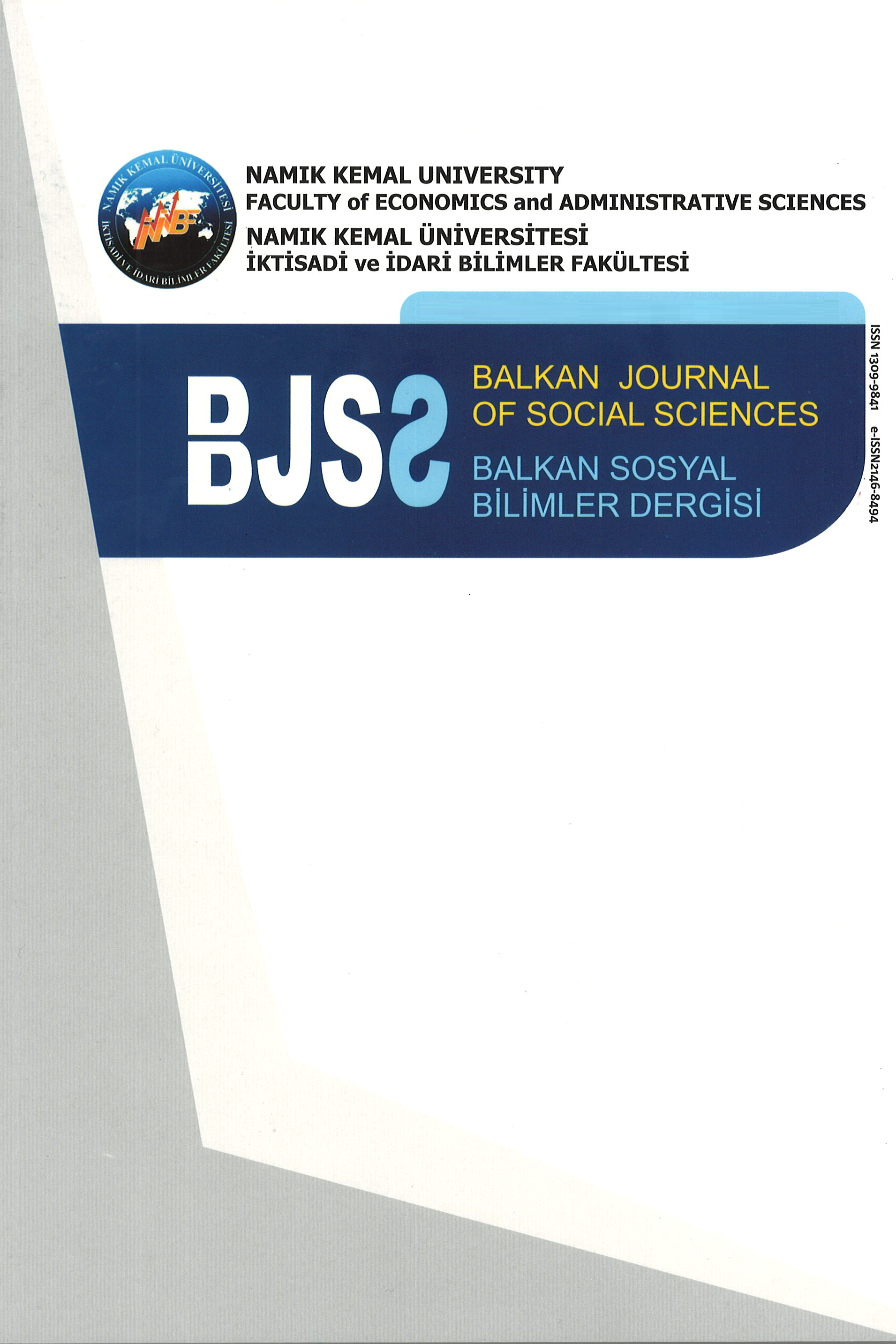Long-run Asymmetric Association between Imports and Economic Growth in Turkey
Economic Growth, Import, NARDL
___
- Adegboyega, R. R. (2017). The Impact of Export and Import on Economic Growth in Nigeria: Evidence from VAR Approach. Journal of Management and Social Sciences, 6, 364-349.
- Agasisti, T., & Bertoletti, A. (2020). Higher education and economic growth: A longitudinal study of European regions 2000–2017. Socio-Economic Planning Sciences, 100940.
- Aluko, O. A., & Adeyeye, P. O. (2020). Imports and economic growth in Africa: Testing for granger causality in the frequency domain. The Journal of International Trade & Economic Development, 1-15.
- Asongu, S. A., & Odhiambo, N. M. (2020). Foreign direct investment, information technology and economic growth dynamics in Sub-Saharan Africa. Telecommunications Policy, 44(1), 101838.
- Awokuse, T. O. (2007). Causality between exports, imports, and economic growth: Evidence from transition economies. Economics letters, 94(3), 389-395.
- Barro, R. J. (1991). Economic growth in a cross section of countries. The quarterly journal of economics, 106(2), 407-443.
- Chen, J., & Dong, B. (2012). A nonparametric estimation on the effects of import and export trade to economic growth in China. Procedia Engineering, 29, 952-956.
- Croes, R., Ridderstaat, J., Bąk, M., & Zientara, P. (2020). Tourism specialization, economic growth, human development and transition economies: The case of Poland. Tourism Management, 82, 104181.
- Fahimi, A., Saint Akadiri, S., Seraj, M., & Akadiri, A. C. (2018). Testing the role of tourism and human capital development in economic growth. A panel causality study of micro states. Tourism management perspectives, 28, 62-70.
- Grossman, G. M., & Krueger, A. B. (1995). Economic growth and the environment. The quarterly journal of economics, 110(2), 353-377.
- Gui-Diby, S. L. (2014). Impact of foreign direct investments on economic growth in Africa: Evidence from three decades of panel data analyses. Research in economics, 68(3), 248-256.
- Herrerias, M. J., & Orts, V. (2011). Imports and growth in China. Economic modelling, 28(6), 2811-2819.
- Koyuncu, C., Unver, M. (2019), An Empirical Analysis of a Long-Term Relationship between Energy Imports and Economic Growth in Turkey. Tekirdağ, Turkey. XI. International Balkan and Near Eastern Social Sciences Congress Series
- Mankiw, N. G., Romer, D., & Weil, D. N. (1992). A contribution to the empirics of economic growth. The quarterly journal of economics, 107(2), 407-437.
- Manwa, F., Wijeweera, A., & Kortt, M. A. (2019). Trade and growth in SACU countries: A panel data analysis. Economic Analysis and Policy, 63, 107-118.
- Omri, A., Daly, S., Rault, C., & Chaibi, A. (2015). Financial development, environmental quality, trade and economic growth: What causes what in MENA countries. Energy Economics, 48, 242-252.
- Pesaran, M. H., Shin, Y., & Smith, R. J. (2001). Bounds testing approaches to the analysis of level relationships. Journal of applied econometrics, 16(3), 289-326.
- Ranis, G., Stewart, F., & Ramirez, A. (2000). Economic growth and human development. World development, 28(2), 197-219.
- Shahbaz, M. (2012). Does trade openness affect long run growth? Cointegration, causality and forecast error variance decomposition tests for Pakistan. Economic Modelling, 29(6), 2325-2339.
- Su, Y., & Liu, Z. (2016). The impact of foreign direct investment and human capital on economic growth: Evidence from Chinese cities. China Economic Review, 37, 97-109.
- Tsaurai, K., & Ndou, A. (2019). Infrastructure, human capital development and economic growth in transitional countries. Comparative Economic Research, 22(1), 33-52.
- Yayın Aralığı: Yılda 2 Sayı
- Başlangıç: 2011
- Yayıncı: Tekirdağ Namık Kemal Üniversitesi
AB Ülkelerinde Ar-Ge Faaliyetleri ve ICT İhracatının Yatırımlara Etkisi
Katılım Bankalarının Finansal Performans Analizi: CRITIC ve PROMETHEE Yaklaşımları
Kurumsal Çevre Doğrudan Yabancı Yatırım Çıkışlarını Etkiler mi?: Panel Veri Çalışması
Hüseyin Safa ÜNAL, Jülide YALÇINKAYA KOYUNCU
Sigorta Şirket Yöneticileri Perspektifinden Sigorta Okuryazarlığı
Long-run Asymmetric Association between Imports and Economic Growth in Turkey
Jülide YALÇINKAYA KOYUNCU, Mustafa ÜNVER
Ekonomik Özgürlüklerin Doğrudan Yabancı Yatırımlara Etkisi: 125 Ülkeden Elde Edilen Bulgular
Meslek Gruplarına Göre Açık İş ve İşsizlik Karşılaştırması: 2007-2018 Dönemi İncelemesi
